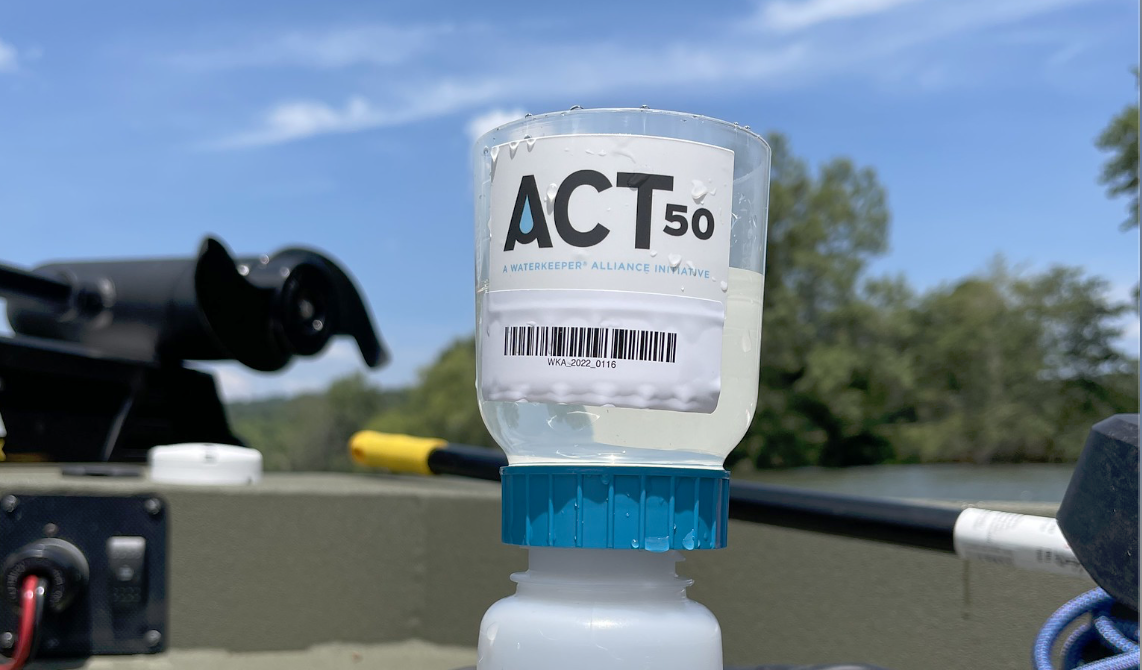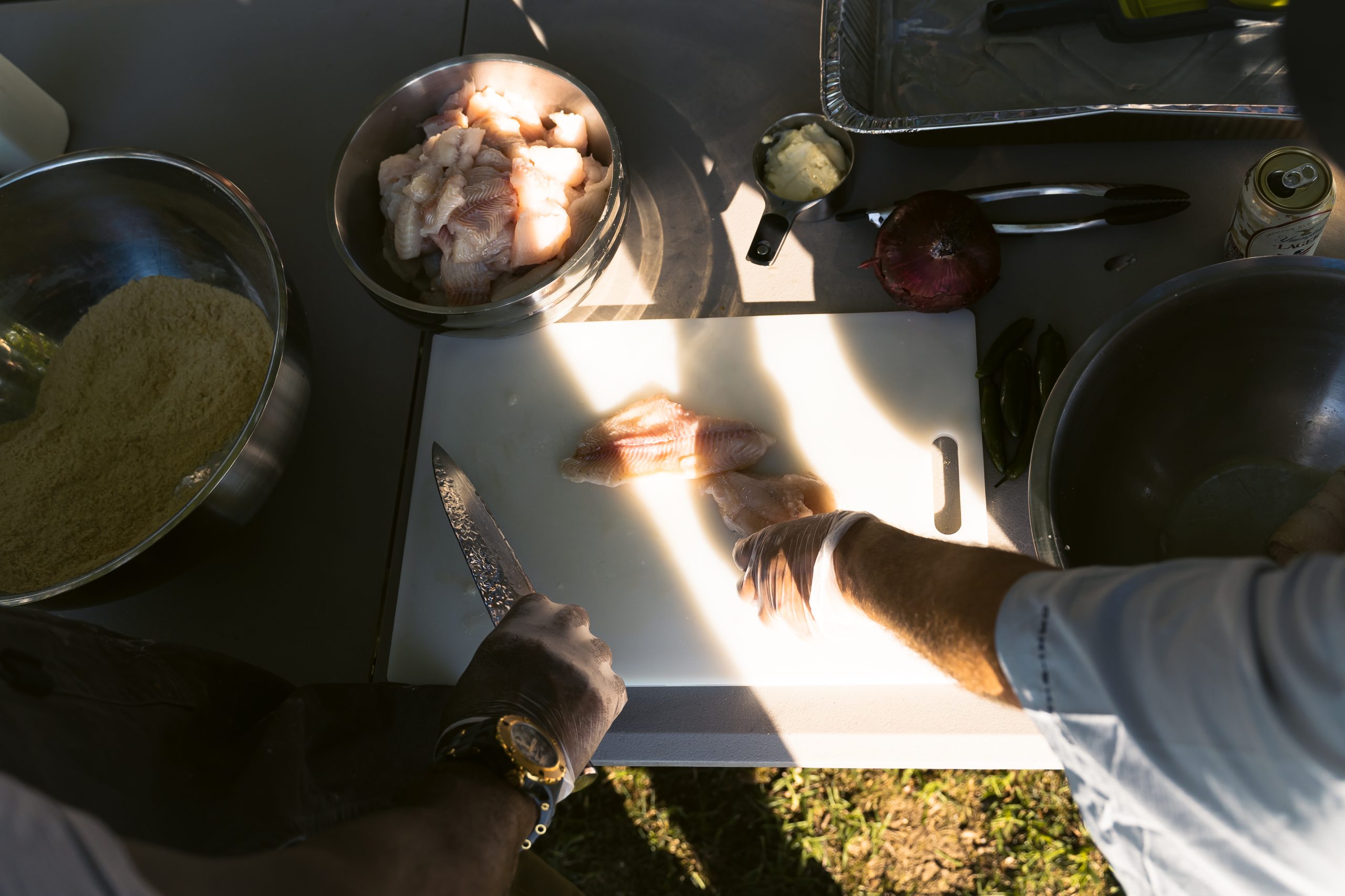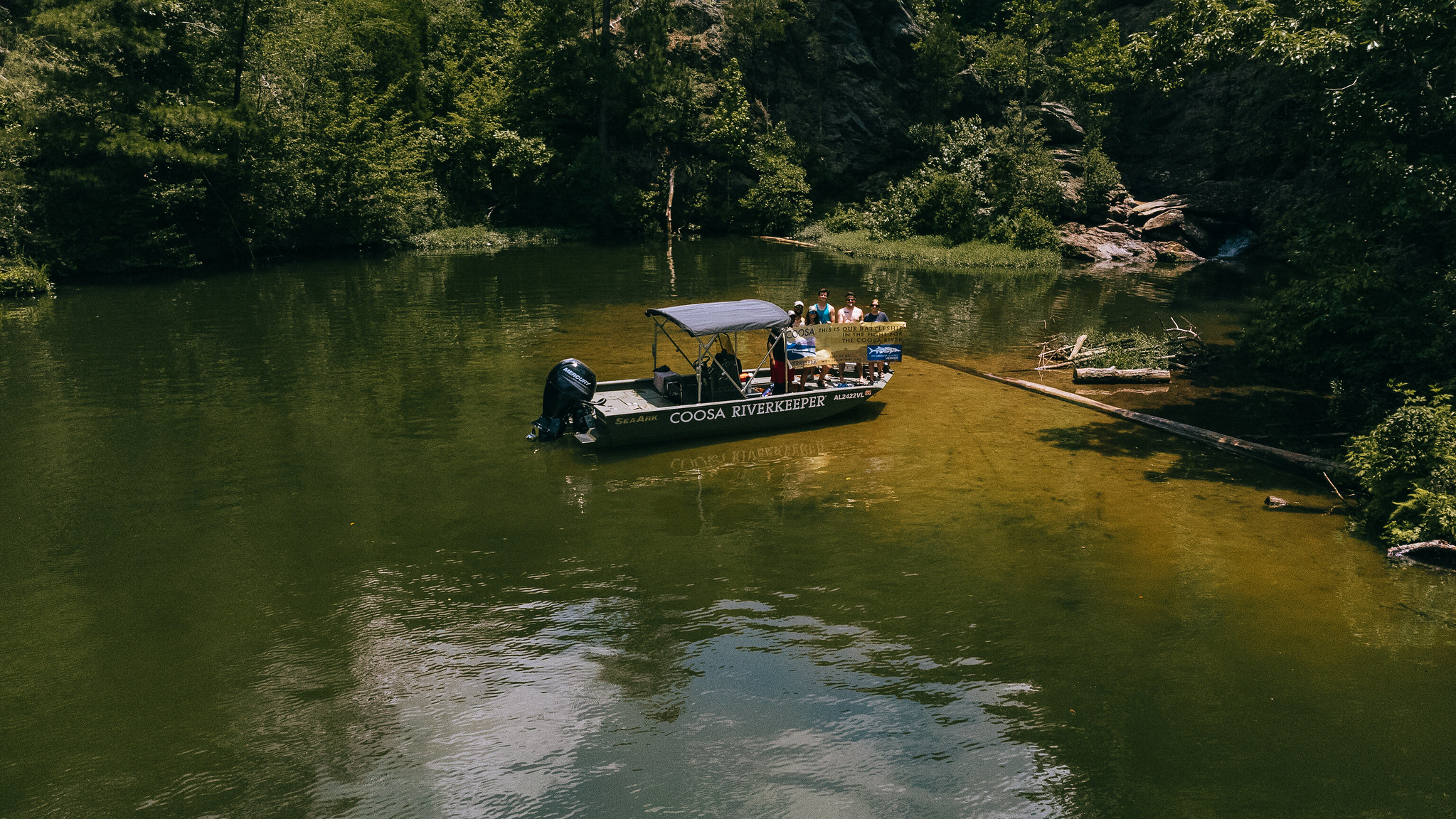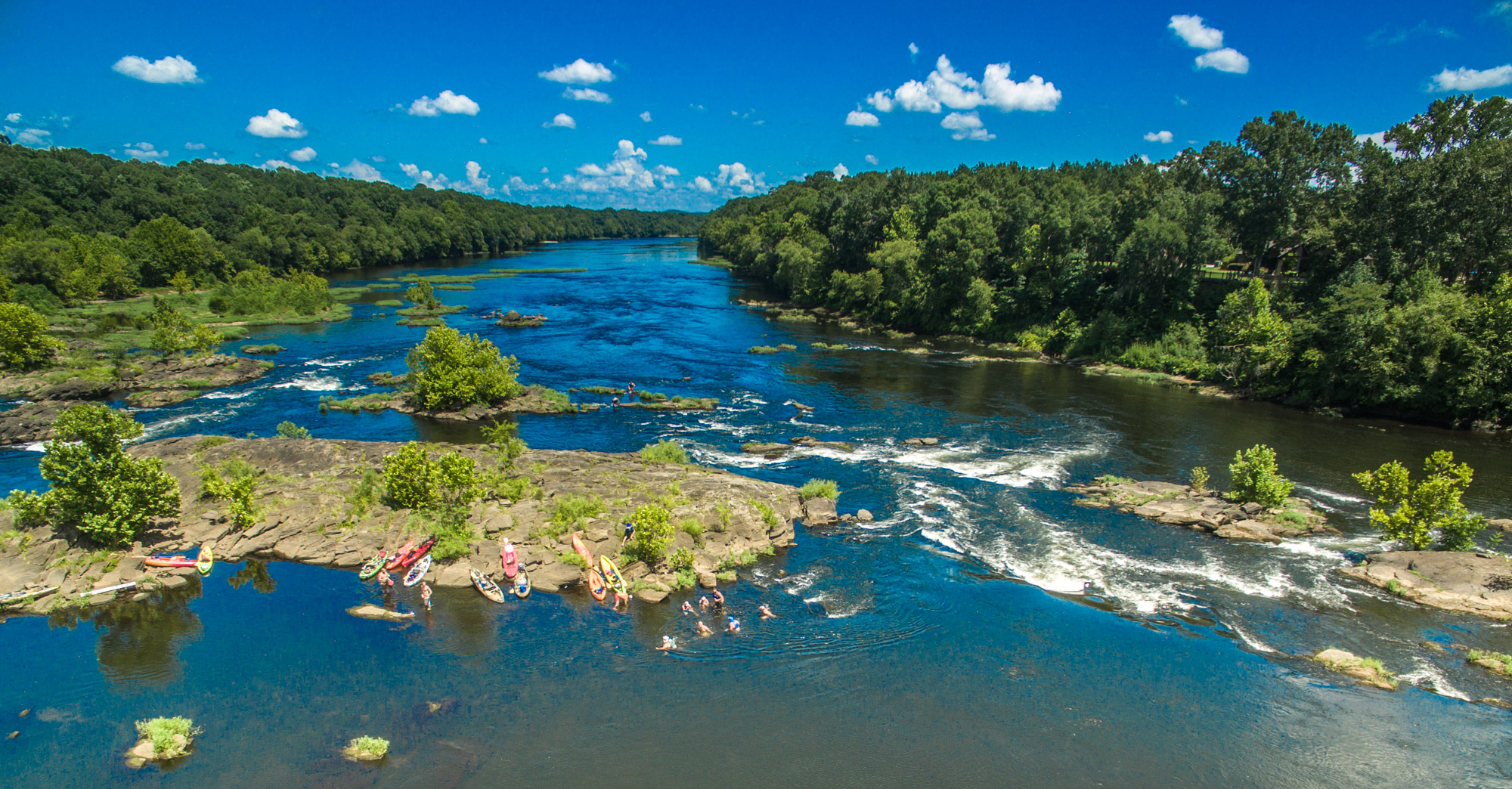Bream
Bass
Catfish
Crappie
The Bluegill
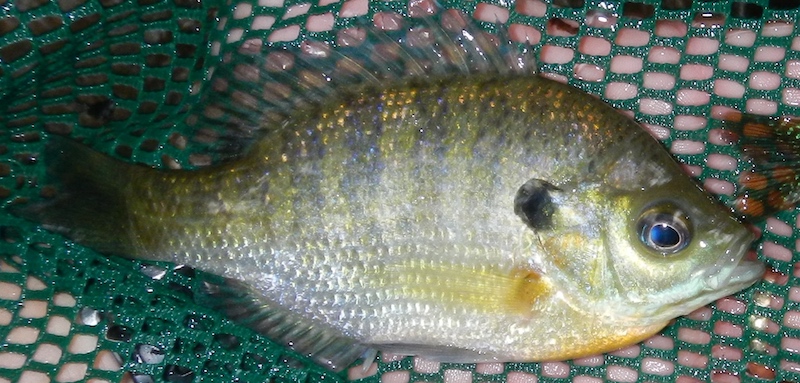
(Lepomis macrochirus)
Bluegill (Lepomis macrochirus) are the iconic bream species that many of us have fond memories of catching as a kid and still enjoy to this day. The world record bluegill, at 4 lbs 12 oz, came from Alabama in 1950.Distinguishing Features
A few features distinguish bluegill sunfish:
- Adult size is 6-10 inches.
- Coloring is a blue, even purple, face with a light olive to gray back and yellow to orange bellies.
- A black dot on the bluegill’s “ear” is notable.
- They have dark vertical bands evenly spaced down their sides.
Habitat
Bluegill live in the shallow waters of lakes and ponds, along with slow-moving areas of streams and small rivers. They prefer water with heavy aquatic vegetation, and hide within fallen logs or water weeds. They can often be found around weed beds, where they search for food or spawn.
Diet
In the wild, they feed on insects, zooplankton, worms, and small fish. They will eat almost any human food scraps thrown into the water, such as bread, corn, and crackers.
Spawn
Bluegill spawning season lasts from April to September, which results in millions of bluegill each year. They prefer to nest in shallow backwater areas, often near largemouth nests. They are density dependent and school with similarly sized bluegill.
Advisories
Choccolocco Creek: It is advised to NOT eat any fish caught from Choccolocco Creek due to PCBs.

(Lepomis macrochirus)
Bluegill (Lepomis macrochirus) are the iconic bream species that many of us have fond memories of catching as a kid and still enjoy to this day. The world record bluegill, at 4 lbs 12 oz, came from Alabama in 1950.
Redbreast Sunfish

(Lepomis auritus)
The redbreast sunfish (Lepomis auritus), big surprise, has a red breast! It is a shiny treat to the eyes. The state record redbreast sunfish was 1 lb 4 oz, caught on 6/12/2010 on the Choctawhatchee River.
Redbreast Sunfish
Distinguishing Features
A few features distinguish the redbreast sunfish:
- Adult size is 6-8 inches.
- Coloring is big surprise, of a red breast, long black ear flap, bluish green stripes, and an olive green back.
- Teeth are present in the roof of the mouth.
- The edges of the soft dorsal fin and the tail fin are yellow to orange.
Habitat
The redbreast prefers vegetated and rocky pools and sloughs for its habitat, but they are found in a wide variety of habitats from small streams to rivers and reservoirs.
Diet
In the wild they feed on insects, zooplankton, worms, and small fish. They will eat almost any human food scraps thrown into the water, such as bread, corn, and crackers.
Spawn
The redbreast sunfish is a spring spawner in sand-gravel substrate depending on location, or when water temperatures reach 60-80 °F.
Advisories
Choccolocco Creek: It is advised to NOT eat any fish caught from Choccolocco Creek due to PCBs.
Redear Sunfish

(Lepomis microlophus)
The redear sunfish (Lepomis microlophus) is more commonly known as the shellcracker because they fancy snails as part of their diet. Because they have a bit of a niche in the snail-eating department, they can be stocked in ponds with bluegill without competing with them for food.Distinguishing Features
A few features distinguish the redear sunfish:
- Adult size is 8-11 inches.
- Coloring is overall pretty dull with a light green to brown back and a few scattered darker spots.
- The distinguishing characteristic is a red edge around their ear flap.
Habitat
You’ll find Redear in moderate to large streams, rivers, reservoirs, lakes, and other standing-water habitats.
Diet
Redear feed on aquatic insects, snails, and smaller fish, but like the nickname shell cracker suggests, they love to fee on snails.
Spawn
Redear sunfish typically spawn from late April to early June. Male redear are in charge of their nests and eggs.
Advisories
Choccolocco Creek: It is advised to NOT eat any fish caught from Choccolocco Creek due to PCBs.

(Lepomis microlophus)
The redear sunfish (Lepomis microlophus) is more commonly known as the shellcracker because they fancy snails as part of their diet. Because they have a bit of a niche in the snail-eating department, they can be stocked in ponds with bluegill without competing with them for food. The state record redear sunfish was 4 lbs 4 oz, caught on 5/5/1962 at Chattahoochee Park.
The Green Sunfish

(Lepomis cyanellus)
Green sunfish (Lepomis cyanellus) don’t grow very large; the state record is 1 lbs 9 oz, caught on 8/10/2005 from McLamore Pond. In ponds, they are undesirable because they grow compete with bluegill for food, but never reach a good size for consumption.
The Green Sunfish
Distinguishing Features
A few features distinguish green sunfish:
- Adult size is 4-8 inches.
- Coloring is a brownish green back with orange to yellow tipped fins.
- Dark colored ear flap.
Habitat
Compared to most bream, they are pretty tolerant of poor water quality conditions and can live almost anywhere (that has water of course).
Diet
Green sunfish diet can include aquatic insects and larvae, insects that fall into the water, crayfish, snails, turtle food, some small fish, zooplankton, and other small invertebrates – whatever they can get ahold of!
Spawn
Green sunfish spawn in mid-April and can continue throughout the summer. Males will make and guard nests in shallow water, often near rocks and submerged structures.
Advisories
Choccolocco Creek: It is advised to NOT eat any fish caught from Choccolocco Creek due to PCBs.
Longear Sunfish

(Lepomis megalotis)
Longear Sunfish (Lepomis megalotis) are a beautiful, brightly colored bream. Breeding males have bright blue spots all over their sides. They are very small; the state record is just 8 oz!Distinguishing Features
A few features distinguish the longear sunfish:
- Adult size of 5-7 inches.
- Long ear flap that is black with a lightly colored edge.
- They have a dark colored back which transitions to a bright yellow or orange belly.
Habitat
Longear prefer moving water. They are common in small to moderately flowing streams, rivers, reservoirs, and oxbow lakes.
Diet
Longear sunfish are carnivorous fish that eat mostly aquatic insects, small crustaceans, and smaller fish. They feed near the surface of the water.
Spawn
Longear sunfish tend to spawn from March into August. These fish group together and create communities of nests on sand and gravel shoals, at the mouths of streams. Male longear gaurd the nest and water over the eggs until they hatch.
Advisories
Choccolocco Creek: It is advised to NOT eat any fish caught from Choccolocco Creek due to PCBs.

(Lepomis megalotis)
Longear sunfish (Lepomis megalotis) are a beautiful, brightly colored bream. Breeding males have bright blue spots all over their sides. They are very small; the state record is just 8 oz, caught on 5/12/1990 on the Yellow River.



